Site by Nattech .inc


Holy Trinity
The formula for the Trinity is this, "Worship we the Father, worship we the Son, worship we the Holy Spirit, three in one and one in three".
God is one in Godhead, Three in Persons, in the name of Father, Son and Holy Spirit. The Holy Trinity has no beginning and will exist for ever without end. In the Trinity there is none that precedes and none that follows; none that is elder and none that is younger, none that is ruler and none that is subject; the Three are One, in all things equal (Jn. 10: 30; 1 Jn. 5: 7.). In nature, in authority, in Lordship, in Godhead, in Divinity, in creating, in saving, in giving, in taking away, in breadth, in fulness, in length, They are One.
The eternal and immutable God has been revealed in three co-
Ethiopian Church History
Information about the introduction of Judaism into Ethiopia is found in the kebre
Negest, (The Glory of the king). The visit of the Queen of Sheba to King Solomon
in Jerusalem is recounted there. On her return to Ethiopia she had born him a son,
whom she named Menelik. When Menelik grew up he visited his father in Jerusalem,
and came home accompanied by many Israelites, the sons of Levites and bringing with
him the Ark of the Covenant, which he had obtained by subterfuge. From then on, Judaism
was practiced in Ethiopia. It is side by some authorities that the Falasha tribes
of northern Ethiopia, who practice a form of Judaism to this day, are descendants
of the Israelites. The form of Judaism professed in apparently a development of a
pre-
Liturgy
The Ethiopian Orthodox Church has retained the ancient service of the Early Church
and still uses the Mass of the
Catechumens. In the Early Church, adults receiving
instruction in the Christian Faith would attend the Mass until the reading of the
Gospel and the sermon. Then the deacon would dismiss the Catechumens and they would
leave the church. The mass is still retained in the Ethiopian Church, though there
are no longer Catechumens under preparation for baptism.
The real liturgy begins
after the point in the service marking the departure of those not yet baptized. The
church of Ethiopia has fourteen Anaphoras, a unique phenomenon in any Christian Church.
Each is used on special occasions to mark the observance of a particular holy day.
Through the Anaphoras differ in length and content, they have common characteristics.
They stress the Incarnations, the Last Supper, the Crucifixion and the Resurrection.
In principle the Mass is conducted in Ge’ez, the ancient classical and liturgical
language of Ethiopia. Today, however, the readings and certain portions of the liturgy
are in the vernacular, Amharic. The congregation. Both men and women may join in
the singing Choirs of the western type are unknown in the Ethiopian Church.
.
Times of prayer
The faithful should pray seven times each day. First upon arising from bed in the
morning and before beginning work. Secondly at the third hour; thirdly, at the sixth
hour; fourthly, at the ninth hour; fifthly, the evening prayer; sixthly, the prayer
before sleep and lastly, the midnight prayer.
The morning and evening prayers should
be said in church, especially on Saturdays and Sundays. Anyone who omits prayer,
unless he is ill, should be cut off from the congregation of the faithful. Anyone
who is sick should attend church if he possibly can, for he may be healed. The other
prayers should be said at home. When the hour for prayer arrives and one of the faithful
finds himself in a place where he cannot pray, he should pray mentally.
Fasting
In the Fetha Negest* fasting is defined as follows:
“ Fasting is abstinence from food,
and is observed by man at certain times determined by law, to attain forgiveness
of sins and much reward, obeying thus the one who fixed the law. Fasting (also) serves
to weaken the force of concupiscence so that (the body) may obey the rational soul.”
Sacraments
The seven sacraments (mysteries) Baptism, Confirmation, penance, Holy Communion, Unction of the Sick, Matrimony and Holy Orders are important in the teaching of the E.O.C. The administration of these sacraments is somehow similar to that of other Eastern Orthodox Churches in many ways. But with more native elements especially in hymary (chanting) and the custom of rites. Sacraments are holy ordinance through which the believer receives an invisible grace under the form of an outward sign. In the performance of each sacrament the Divine Majesty Himself is present
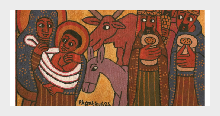
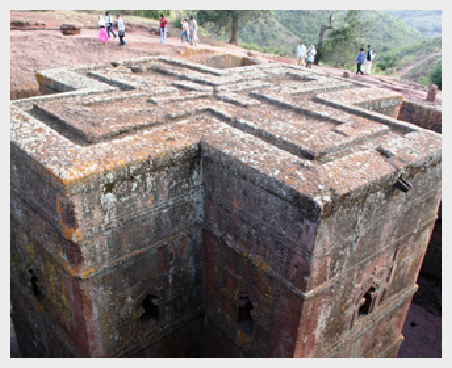
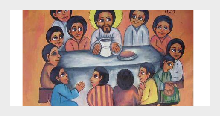
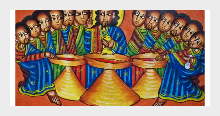
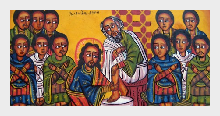

Lalibela
Lalibela is a town in northern Ethiopia that is famous for its monolithic rock-